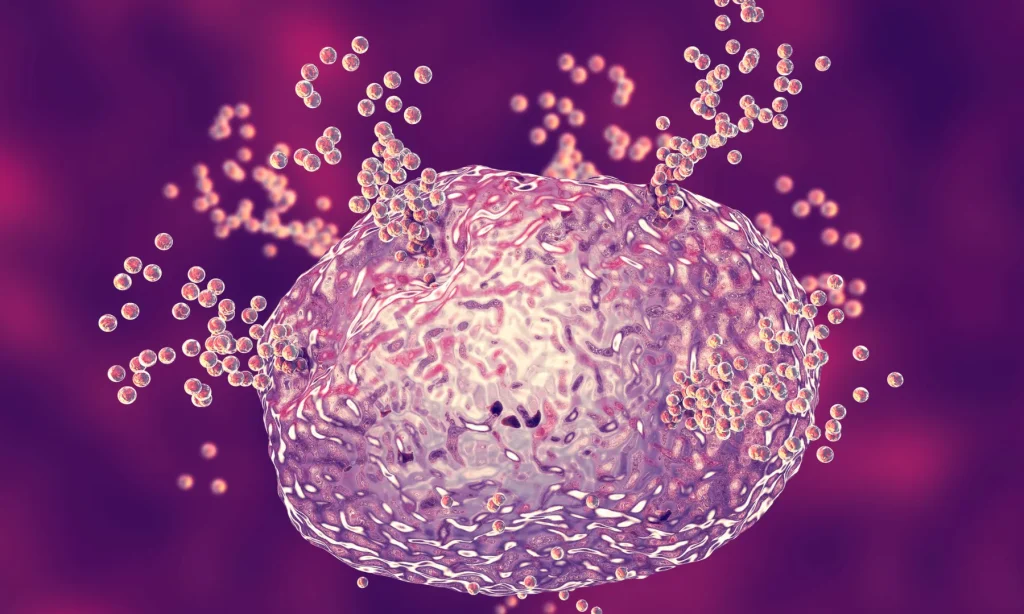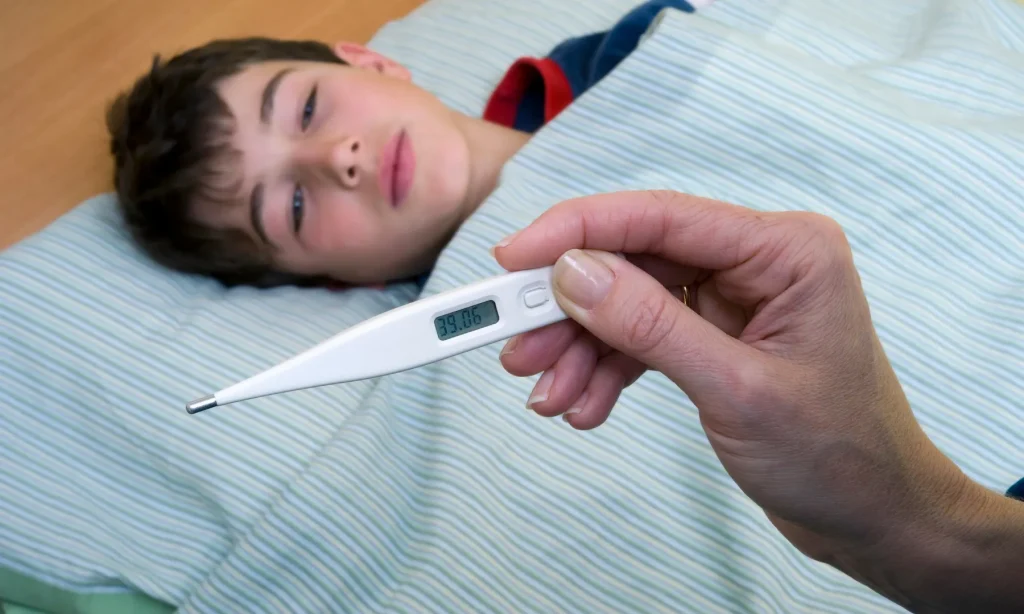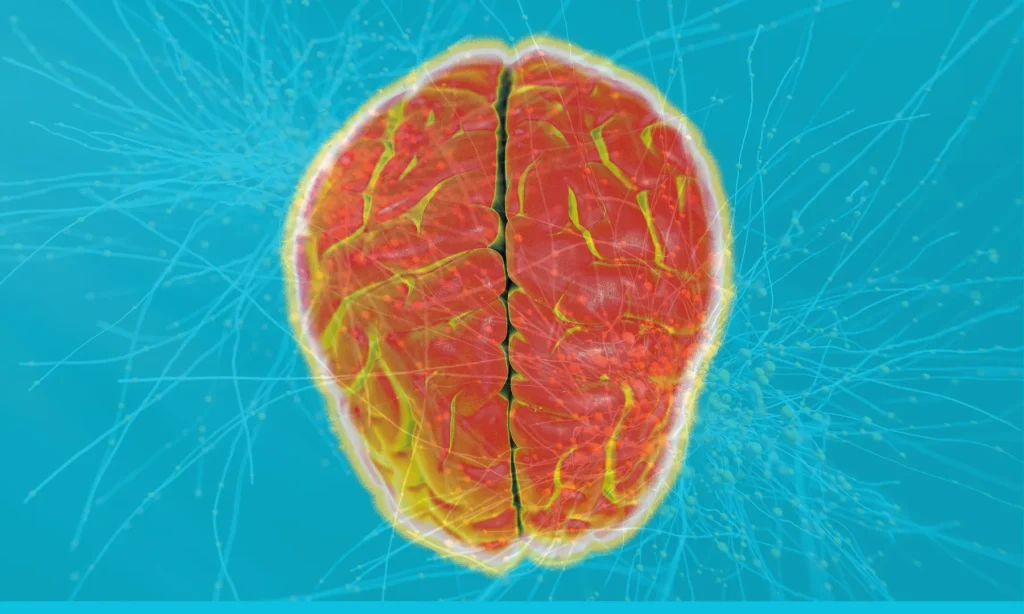Some days it feels like your child’s tics have a mind of their own, calm one week, then suddenly back with a vengeance after a simple cold, a stressful weekend, or spring allergies. It’s easy to blame randomness, but these patterns aren’t random at all. Behind the scenes, the immune system and brain are in constant communication, and sometimes that dialogue turns stormy.
Neuroinflammation in plain English means the immune system’s “alarm signals” have reached the brain. When those immune messengers, including histamine, stay switched on too long, they can stir up brain inflammation that tweaks the way nerves fire. The result? Tics that seem to appear out of nowhere.
This guide on neuroinflammation and tics is your behind-the-scenes tour of what’s really happening when tics flare: how immune triggers like infections, allergens, or stress light up those neural pathways and, most importantly, how to help calm the system. No jargon, no overcomplication; just clear, practical ways to cool inflammation and bring your child’s brain back into balance.
Key Takeaways
-
Neuroinflammation plays a key role in triggering and worsening tics, especially after infections, allergies, or periods of stress.
-
The immune system’s overactivity can alter brain chemistry, causing tics to intensify as the body reacts to everyday triggers like pollen, illness, or emotional events.
-
Supporting your child with regular sleep, healthy foods, hydration, and active routines can help reduce neuroinflammation and make tic episodes less severe.
-
Environmental factors—including allergens, toxins, and even gut health—can influence neuroinflammation and the frequency of tics.
-
Tracking patterns and seeking professional help when tics rapidly worsen or are accompanied by concerning changes can ensure your child gets the support needed.
Table of Contents
When Tics Flare After Colds, Allergies, or Stress: What’s Really Happening?
You swore you finally had things under control, then a bug sweeps through school or a pollen bomb drops, and the tics come roaring back. It’s enough to make even the calmest parent consider running away to a tic-free island.
Here’s the hard truth (but also the hope): tic flares after colds, allergies, or stress aren’t just some odd coincidence. When the immune system senses a threat, infection, pollen, or even emotional upheaval, it launches a defense. Sometimes that response lights a small fire in the brain, called neuroinflammation.
This isn’t science fiction. In children with tics, bouts of immune activity, from a nasty sinus infection to a rough patch at school, can change the brain’s chemical messages and make tics more frequent or intense. Instead of seeing these spikes as random or your fault, start seeing them as messages. Neuroinflammation is the body’s way of waving a little red flag: something’s stirred up the immune-nerve network.
And yes, there’s a lot you can do to settle that network, if you know what “smoke signals” to look for.
What Is Neuroinflammation?
Let’s ditch the white coats and jargon for a sec. Neuroinflammation is what happens when the brain’s own “neighborhood watch” gets a little too fired up. Think of it like an overzealous security system, helpful when there’s a real threat, but chaos when it pulls every alarm for a stray cat or a stray pollen grain.
The Brain’s “Neighborhood Watch” System
Inside your child’s skull is a world buzzing with messages. Immune cells, called microglia, and their loud friends, cytokines (no, not an alien species, just special proteins), are like local lookouts on patrol. You’ve got big names in the lineup: IL-6, MCP-1, and the dramatic TNF-α. Their job? To sound alarms when invaders show up, maybe a cold bug, perhaps a piece of dust.
But here’s where it gets tricky: When cytokines and their sidekicks get carried away, they mess with brain signals, especially those involved in tics and Tourette’s. It’s like a neighborhood dog barking at every squirrel. Eventually, it stresses everyone out and messes with the peace.
The Blood–Brain Barrier (BBB): The Brain’s Security Gate
Imagine the brain has its own VIP bouncer: the blood–brain barrier (BBB). Its job is to keep out troublemakers, extra immune molecules, germs, and even toxins. But during a flare, say after a cold or major allergy attack, the BBB gets a little “leaky.” That’s when immune messengers sneak into places meant to be private, stirring up more drama and affecting brain wiring, controlling movement and impulses.
This “open door” can let in immune system noise that generally wouldn’t get a ticket inside. That’s one reason you’ll see tics wax and wane around illness or allergy season. The security system is temporarily on the fritz.
Common Triggers That Rev Up Immune Signals
The world is full of surprises, some less fun than others. You can’t put your child in a bubble, but you can get wise to what sets off their immune-brain fireworks. Here’s where the immune system and tics meet up most often:
Infections and Post-Infectious States
Colds, strep, and that odd virus making the neighborhood rounds don’t just leave you reaching for tissues; they ramp up immune messengers like cytokines. For some kids, especially those with tics or PANS/PANDAS, it’s not the bug itself, but the post-infection “echoes” that cause trouble. Weeks after the fever has faded, the immune system may still be playing catch-up.
What’s wild? Pediatric immune activation (fancy talk for “kids’ immune systems are on full throttle”) can linger, subtly reshaping brain signals in the background. Your child looks well, but the brain’s still buzzing.
Allergens & Histamine (and Why It Matters for Tics)
Meet the mast cells, little immune grenadiers that live beside nerves. When they spot pollen, dust, or food triggers, they pop open and shower the area with histamine. Histamine doesn’t just make noses run: it also clouds thinking (hello, brain fog), stirs up irritability, and in some children… ramps up tics.
The science? Histamine changes how neurons talk, sometimes making them extra jumpy. On high-pollen days, you may actually spot a spike in tics. This is mast cells and tics, wingman style.
Environmental Toxins & Mold Exposure
City air smog, mold hiding in last year’s basement box, chemical cleaners, they all push the immune system’s panic button. These exposures aren’t just “bad for you” in some vague way. Pollutants can tweak your child’s immune response through inflammation, lighting up cytokines, and quietly nudging tics upward. You can learn more about tics and toxins and also mycotoxins, but the core idea: keeping the air and environment clean supports a calmer brain.

How Immune Signals Affect Neurotransmitters
Neurotransmitters are like the orchestra of your brain; each has its own part, tempo, and emotional flair. When immune molecules barge into rehearsal, the tune changes.
Cytokines and Dopamine/GABA Balance
Let’s talk front-and-center: dopamine. It is the ringleader for movement, and, you guessed it, tics. Pro-inflammatory cytokines (think: immune system alarm bells) can crank up dopamine activity while putting the brakes on GABA, the calming crew.
In Tourette’s and similar disorders, cytokines are linked to dopamine pathway disruption. Basically, the immune system hits the gas pedal with dopamine and cuts the brake line on GABA, sending the brain’s movement center into overdrive.
Mast Cell Activation Near Nerves
Remember those mast cells from earlier? Well, when they camp out near nerve endings and go wild (histamine party), it’s like someone spiking your child’s soda with “hyper” syrup. These mast cells release not only histamine but also other inflammatory mediators, right next to sensitive neurons.
This close-up ‘chat’ actually changes local nerve firing patterns, making everything feel a bit more jumpy and urgent. That’s what mast cell–neuron cross-talk means. It isn’t just a lab thing; it’s something you might see as more blinking, shoulder shrugs, or vocal sounds.
Signs Your Child’s Immune System Might Be ‘On High Alert’
You know your kid best. But if their tics or mood seem dialed up to eleven, look for other clues the immune system’s in turbo mode:
|
Category |
Observable Signs |
Why It Matters |
|---|---|---|
|
Sleep |
Trouble falling asleep, sweats, weird dreams |
Inflammation can mess with melatonin and cortisol signals |
|
Energy |
Fatigue, “wired but tired,” afternoon slumps |
IL-6 throws a wrench in the body’s energy creation |
|
Allergy/Skin |
Eczema, red cheeks, drippy nose |
Histamine and mast cells are stirring up skin/airway misery |
|
Digestion |
Bloating, constipation, sudden food reactions |
Gut–immune loops feed back to the brain via cytokines |
These patterns might not identify anything on their own, but they’re body-language clues worth tracking.
Parent-Led Ways to Lower Inflammatory Load (Non-Medical)
Feeling helpless is the worst. The good news: There are hands-on strategies that can help create a less inflamed, more resilient environment for your child’s brain.
Sleep, Hydration, and Food First
Before you go chasing exotic treatments, start with the basics. Every cell, especially in the brain, thrives on sleep, hydration, and foods that dial down inflammation. Set a calm, screen-free bedtime routine (easier said than done, right?). Hydrate with water, slip in fruits and colorful veggies (nature’s immune helpers), and offer omega-3-rich foods like wild salmon or walnuts.
Sorry, sugar, but you’re off the guest list. Processed snacks and refined sweets stoke the fire for immune responses. And here’s a quirky science tidbit: your child’s gut chats with the brain nonstop. When the gut is calm, tics tend to follow suit. Consider cross-checking what foods trigger either tummy or tic troubles; sometimes, it’ll explain more than any test.
Calming the System Naturally
Now’s the time for creative, “parent-powered” hacks:
-
Gentle movement (think: backyard soccer, yoga, even a slow walk) cleanses stress and calms immune responses.
-
Fresh air and sunlight aren’t just grandma’s advice; they’re nature’s anti-inflammatory toolkit, supporting immune circadian cues.
-
Allergy season? Break out the saline nasal spray; clearing airways lowers the odds of mast cell fireworks.
-
Wind-down routines before sleep, a bit of simple breathing, mindfulness, or reading, set the tone for rest, not rumination. Essential oils (like lavender) may ease nerves but aren’t an aid-all. Let’s keep expectations real.
And yes, there are Facebook groups and online forums full of parents swapping ideas, from homeopathic remedies to diet tweaks. You’re not alone in testing what works and what doesn’t. Sometimes, that’s half the battle.

When to Seek Professional Guidance
Some days, the parenting manual feels woefully thin. If tics take a sudden turn for the worse, or you start seeing significant shifts in energy, mood, or skills, it’s time to tag in some experts, no shame in that at all.
When Immune Activation May Need Evaluation
Red flags worth a check-up:
-
A fever that lingers or keeps coming back
-
Quick regression in language, school performance, or daily independence
-
Emotional storms (sudden outbursts, panic, mood swings) that don’t fit your child’s pattern
-
Sudden explosive tics or OCD-like behaviors after an infection (think strep or flu), especially with suspicion for PANS or PANDAS
Consult a functional medicine practitioner expert in tic disorders with immune and gut health know-how. They are worth their weight in gold here, especially if you want answers, not just prescriptions.
No one gets a badge for suffering in silence; reach out, compare notes, and keep searching until you find the help your child deserves.
Parent Checklist to Calm Inflammation and Support the Brain
Significant changes start with small steps. Paste this checklist on the fridge. The goal is progress, not perfection:
-
[ ] Track tic patterns after colds/allergies (is there a pattern to flare-ups?)
-
[ ] Keep bedtime and wake times consistent, especially during school breaks
-
[ ] Prioritize water and real food over juices and snacks
-
[ ] Get outside daily, even if just for a lap around the block
-
[ ] Nix processed sugars when possible (watch those hidden ones in ketchup and granola bars)
-
[ ] Stay proactive about allergy triggers (maybe HEPA filters, or regular room cleaning)
-
[ ] Don’t hesitate to call a pro if flares are severe, persistent, or your gut says something’s off
Can you relate? No one expects you to have it all figured out, least of all your child. Find your rhythm, link up with others walking the same path, and give yourself grace for the tough days.
And if you’re looking for expert guidance tailored to your family, Regenerating Health is here to help you navigate every twist and turn, using what’s worked for families just like yours.
Conclusion
Tic patterns rarely come out of nowhere. When the immune system stays switched on, which may be from illness, allergens, or stress, the brain feels the ripple. Understanding neuroinflammation and histamine’s role in brain inflammation helps take the mystery (and guilt) out of those flare-ups.
You don’t need to fix everything at once. Focus on the basics: rest, rhythm, nourishment, and connection. Small, steady steps make a big difference over time.
If you want to explore what’s happening deeper in the body, read next:
Gut Health and Tics, The Brain-Gut Axis, and Sleep and Tic Disorders.
Because when the body feels safe and supported, the brain can finally quiet down.
If you are ready to dig deeper into your child’s tic disorder, click here and start with the Tic Disorder Cheat Sheet.
Frequently Asked Questions
Sometimes — but it depends on why the tics are flaring. If your child’s tics spike during allergy season or after exposure to dust, pets, or pollen, antihistamines can calm part of the inflammatory response tied to histamine’s role in brain inflammation.
However, antihistamines only quiet one branch of the immune system. They don’t address the deeper causes of neuroinflammation, such as gut imbalance, poor sleep, or chronic immune activation.
Pollen doesn’t just make noses run, it can wake up the mast cells that release histamine and cytokines near nerves. Those chemicals cross-talk with the brain, increasing excitability in areas that control movement and speech. For kids with an already sensitive nervous system, that extra histamine “noise” can push tics into overdrive. Supporting histamine balance, reducing exposure, and keeping sleep and hydration steady can all help blunt those peaks.
Yes, food sends constant messages to the immune system. A diet rich in omega-3 fats, colorful vegetables, berries, and fiber can quiet inflammatory messengers like IL-6 and MCP-1. On the flip side, processed foods, added sugars, and artificial dyes can keep those same pathways fired up. While diet alone won’t erase tics, it’s one of the most direct ways to lower neuroinflammatory tone day to day. Parents often notice fewer mood swings, steadier sleep, and smoother tic patterns once inflammatory foods are swapped for whole, nutrient-dense meals.
Neuroinflammation refers to inflammation in the brain, often triggered when the immune system responds to infection, allergies, or stress. In children with tics, this immune activity can disrupt brain signals, leading to tic flares or increased tic severity.
After infections or during allergy season, the immune system produces chemicals that can cross into the brain and increase neuroinflammation. This process may boost dopamine activity and make tics more frequent or intense, especially in sensitive children.
Yes, emotional stress can activate the immune system, leading to neuroinflammation. This immune-brain interaction can alter neurotransmitter signals, sometimes resulting in noticeable increases in tic frequency or intensity.
Simple strategies include maintaining regular sleep routines, promoting hydration and whole foods, limiting processed sugars, ensuring daily outdoor activity, and minimizing allergen exposure. These steps can help lower inflammation and provide a calmer environment for the brain.
Yes, exposure to environmental toxins such as mold or air pollution can trigger the body’s immune response, increasing neuroinflammation and potentially worsening tic symptoms. Regular cleaning and using air filters can help reduce these risks.
Consider seeking professional evaluation if you notice persistent fever, sudden regressions, significant mood or behavioral shifts, or explosive onset of tics—especially following infection. A healthcare provider experienced with immune-related tic disorders can offer targeted support.
References:
Chi, S., & Kim, J. W. (2023). Cytokine levels reflect tic symptoms more prominently during mild phases. BMC Neuroscience, 24(1), Article 57. https://bmcneurosci.biomedcentral.com/articles/10.1186/s12868-023-00830-3
Hsu, C.-J., Wong, L.-C., & Lee, W.-T. (2021). Immunological dysfunction in Tourette syndrome and related disorders. International Journal of Molecular Sciences, 22(2), Article 853. https://doi.org/10.3390/ijms22020853
Kutuk, M. O., Guler, G., Kutuk, M., Tufan, A. E., & Kandemir, H. (2025). MCP-1 is elevated in the cerebral fluid of children with Tourette syndrome: Case series and literature review. Brain and Behavior, 15(6), Article e70617. https://doi.org/10.1002/brb3.70617
Arcilla, C., & Singla, R. (2024). Pediatric autoimmune neuropsychiatric disorders associated with streptococcal infections (PANDAS). In StatPearls. StatPearls Publishing. https://www.ncbi.nlm.nih.gov/books/NBK606088/
Gilbert, D. L. (2019). Inflammation in tic disorders and obsessive-compulsive disorder: Are PANS and PANDAS a path forward? Journal of Child Neurology, 34(10), 598–611. https://doi.org/10.1177/0883073819848635
Hsu, C.-J., Wong, L.-C., & Lee, W.-T. (2021). Immunological dysfunction in Tourette syndrome and related disorders. International Journal of Molecular Sciences, 22(2), Article 853. https://doi.org/10.3390/ijms22020853
Biedermann, T., & Maurer, M. (2024). Beyond classical immunity: Mast cells as signal converters between tissues and neurons. Immunity, 57(12), 2723–2736. https://doi.org/10.1016/j.immuni.2024.11.016

